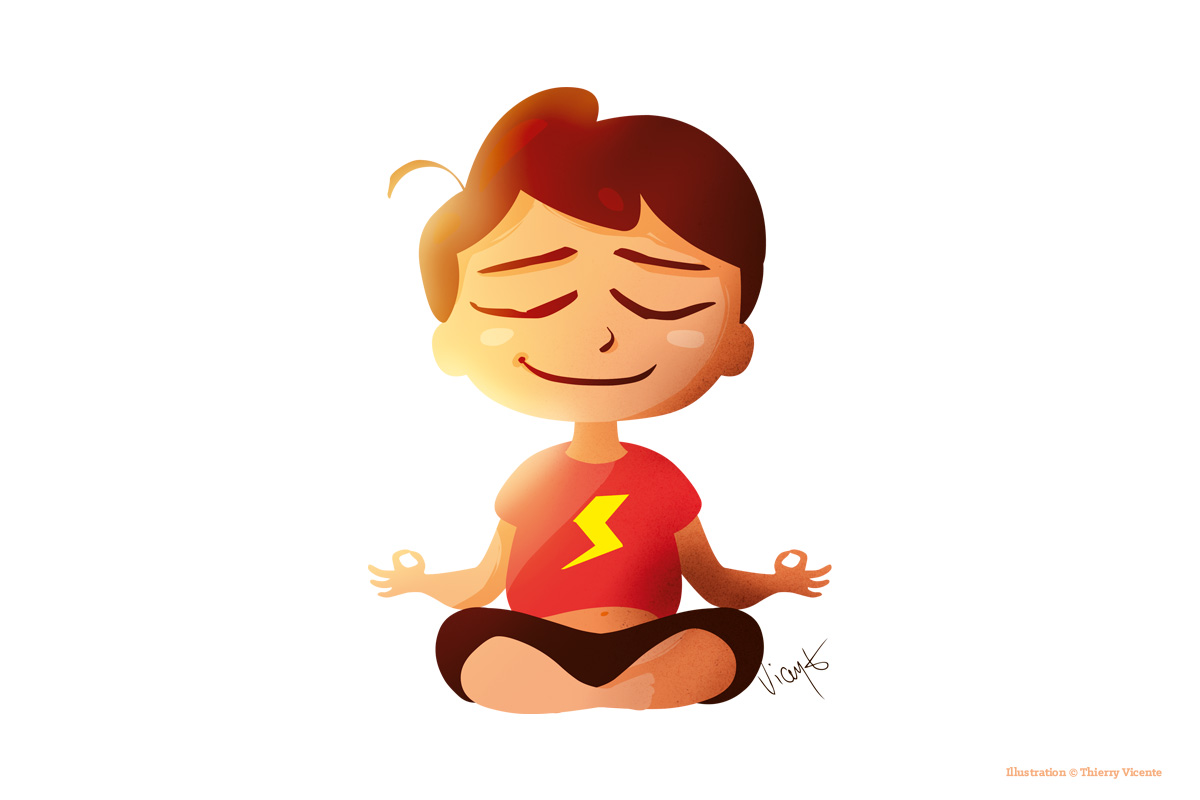[LUM#14] Yoga on the agenda
How can we promote an education that considers children and adolescents holistically, with cognitive as well as physical and emotional learning? Why not through yoga? An activity that proved hugely popular during lockdown, it could have a place in schools.

A sporting activity, spiritual awakening, and way of life, yoga has become a booming "global activity. " "During lockdown, the word 'yoga' was one of the most searched terms on search engines, " explains Sylvain Wagnon. And its benefits are well established."It improves attention, concentration, stress management, and emotional control, particularly by reducing levels of cortisol, the stress hormone," explains the researcher from the Interdisciplinary Laboratory for Research in Didactics, Education, and Training (Lirdef*). These qualities could open the doors to schools.
"Yoga is already part of the school curriculum in some Northern European countries, but France is lagging far behind," laments Sylvain Wagnon. Why is this? "The school system has always neglected the body and emotions in favor of cognitive skills: reading, writing, and arithmetic. " Physical education and sports? "While they are certainly present, they are often considered less important, as if there were a hierarchy between cognitive and physical activities. Ultimately, an entire dimension is being neglected, which is detrimental to harmonious development."
Positive feedback loop
In countries where yoga is integrated into schools, its positive effects on learning are widely recognized, "as are its benefits for the well-being of students and teachers, " emphasizes Sylvain Wagnon. Students learn to be tactile, breathe, relax, and be calm. "These practices create a different atmosphere for both children and teachers, one that is more serene and conducive to conflict management." And therefore more conducive to learning. "A real virtuous circle."
While some schoolchildren in France have already joined this circle, having had the opportunity to adopt the downward dog position at school, it remains difficult for the moment to quantify the place of yoga in kindergarten, primary, and secondary school education. "The first initiatives to introduce yoga into schools were led by teachers who practiced it themselves, but how many are there? We are currently undertaking a study to quantify this boom, which is still little known in France," says the researcher, who is assisted in this work by Sihame Chkair, a doctoral student in education sciences who is devoting her thesis to the question of the integration of alternative practices—including yoga—into public education.
Concrete proposals
The doctoral student is studying the introduction of yoga among students at Jules Ferry High School in Montpellier. "The feedback has been very positive, including from the teaching staff," reports Sylvain Wagnon. Currently, more and more teachers are emphasizing the benefits of yoga for coordinated work on breathing and body awareness. " But how can these practices be transposed and generalized? And how can yoga be fully integrated into teaching? "That is precisely our goal: to make concrete proposals to the Ministry of Education to find a real place for yoga in schools." So that all children and teenagers can benefit from this virtuous circle. Namaste.
For more information:
Find UM podcasts now available on your favorite platform (Spotify, Deezer, Apple Podcasts, Amazon Music, etc.).
*Lirdef: Host team 3749 (UM – Paul-Valéry Montpellier 3 University)